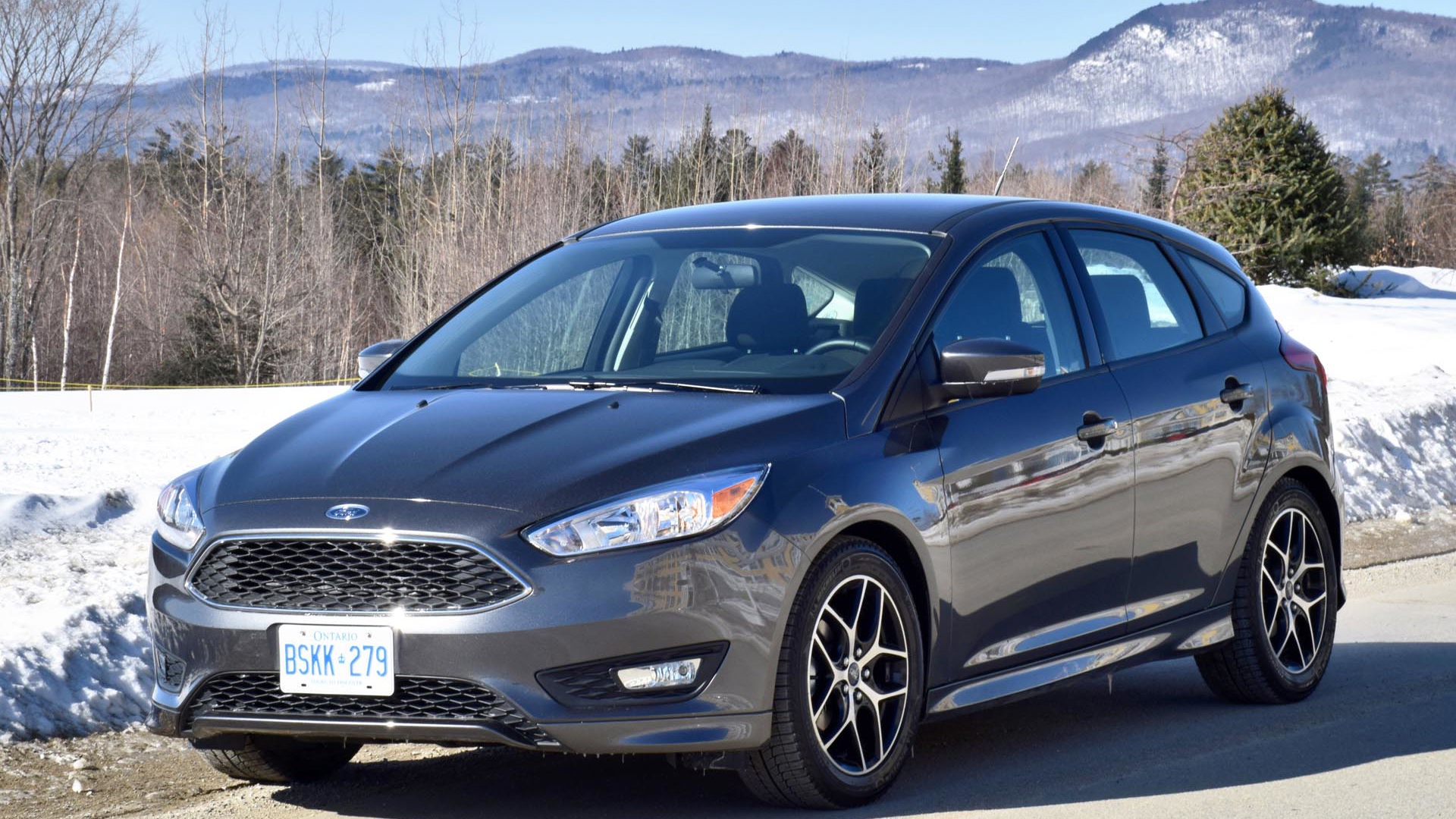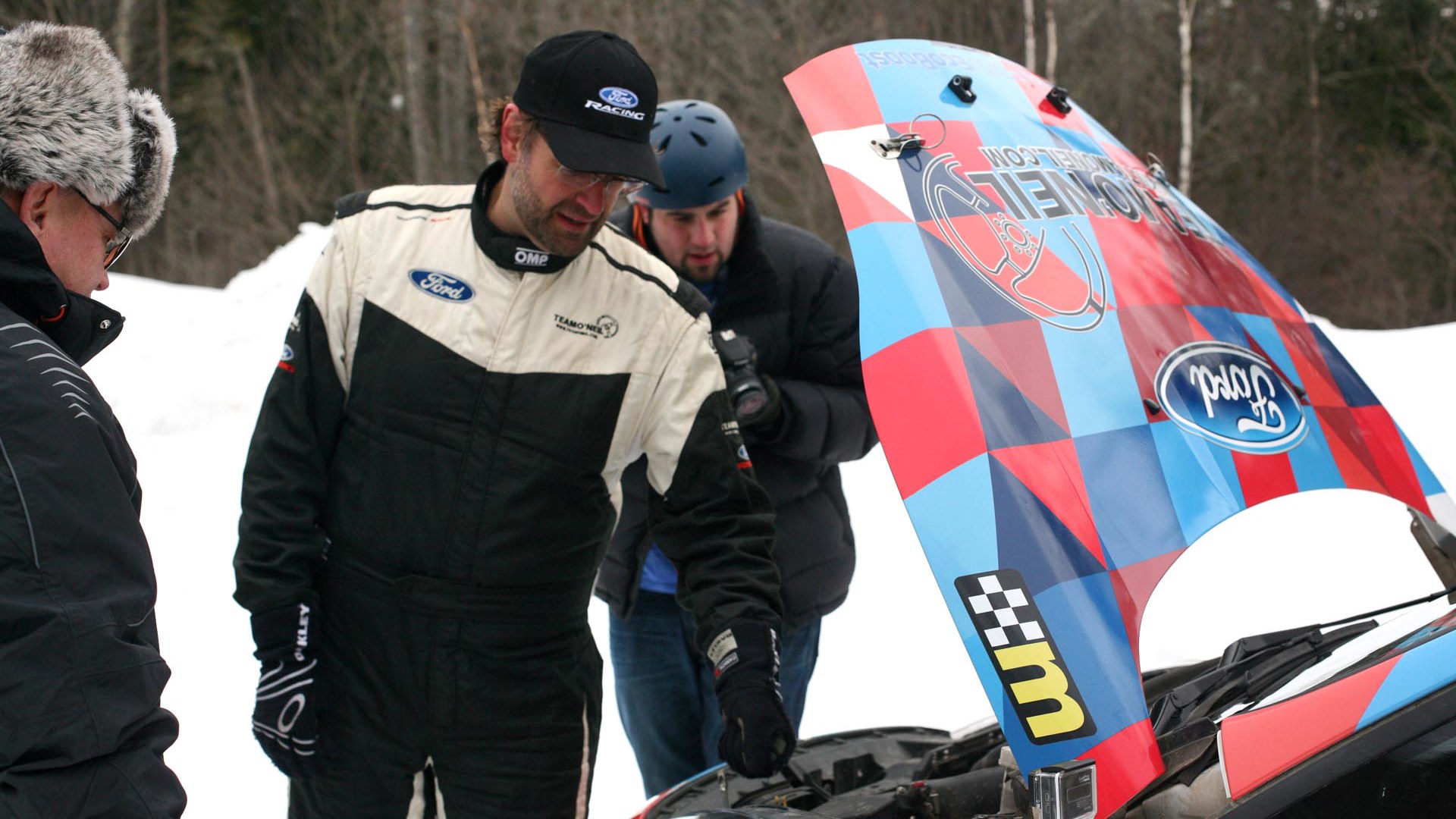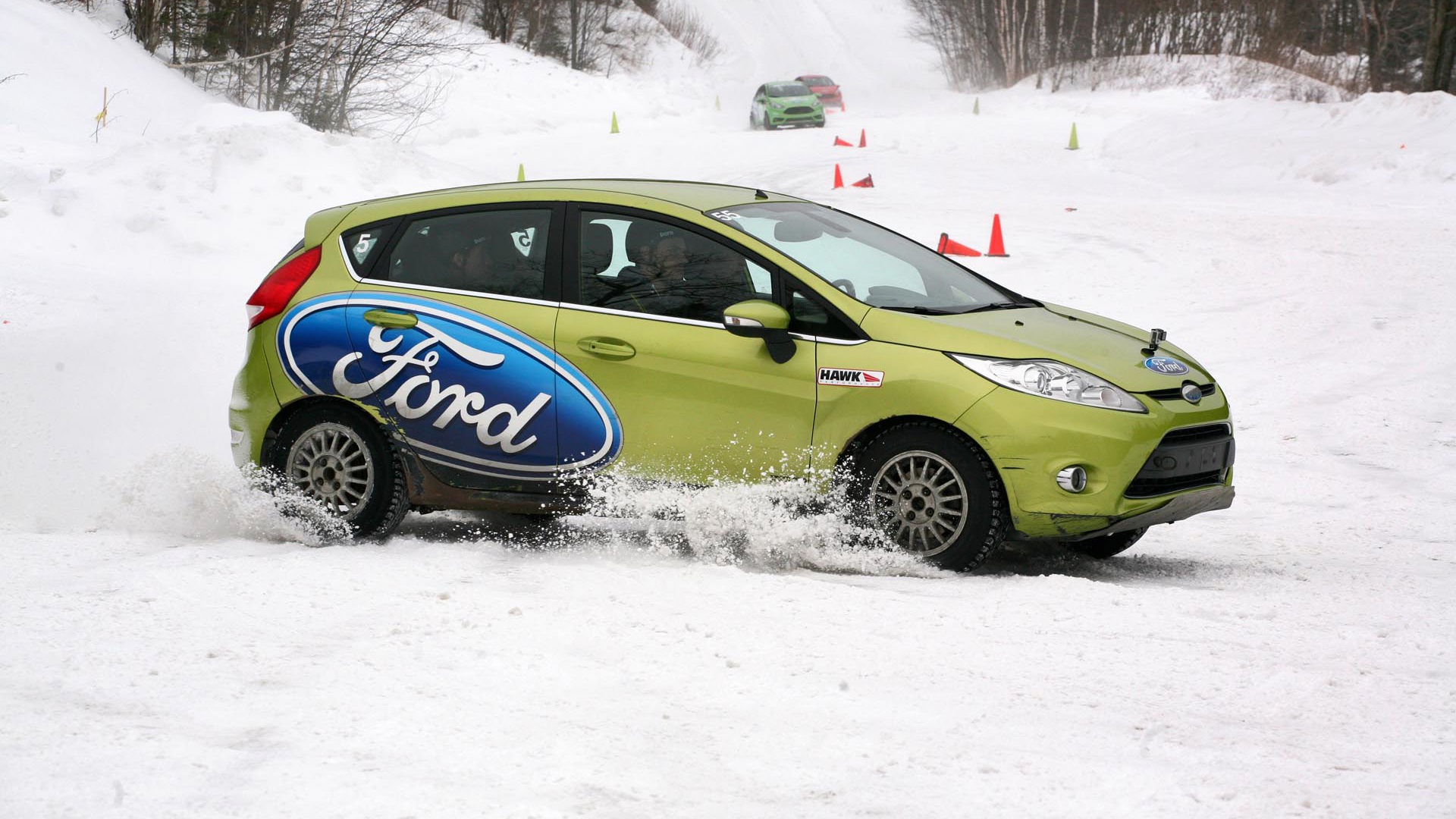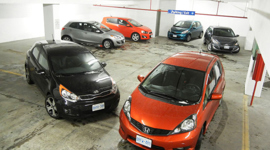The latest-generation Ford Focus was one of the first cars to address the griping Canadian masses fed up with North American grade compacts. The rest of the world got top-notch, global-grade machinery that, for numerous reasons, was more desirable. Us Canucks were instead provided a North American–spec sheet metal and grey crispy plastic gruel for our compact dollar, leaving many to complain about the disparity.
The bellyaching masses rejoiced when the new Focus arrived for model year 2012, bringing with it globally leveraged engineering, design, dynamics, and technologies. On a test drive of Ford’s first truly global compact, your writer found a compelling package that hit the important marks well, impressed further with numerous thoughtful and delightful little touches, and amounted to a machine with numerous strengths and few weaknesses.
Now, Ford has updated the Focus for model year 2015 to tidy things up and build more value, while leaving core Focus attributes intact.
What’s changed? Typical mid-cycle update stuff. Bumpers are tidied, taillamps are slimmer, and the front and rear fascias are tweaked to bring the Focus in line with Ford’s latest global design language. Up front, look for the Aston Martin replica grille a la Fusion, and in rear, for a redesigned tailgate, slimmer taillamps and other subtle tweaks. There’s improved sound deadening, improved wind sealing, redesigned mirror hinges and thickened carpets and door glass for a quieter ride.
Features and packaging are revised too – with Sync, Bluetooth, a back-up camera and a fast-charge USB port standard across the board. Many of today’s common outward-looking hazard detection features are, additionally, available for drivers who need them.
Customer input resulted in easier-to-use steering-wheel mounted controls, revised cupholder placement, and door lock controls mounted to the doors, instead of the centre console, which was a European thing that didn’t fly here.
Ditto the programming of the powershift dual-clutch transmission, which functions like an automatic but works more like a manual with the gear shifts done for you, sans clutch pedal. For 2015, to provide the more natural and automatic-like feel demanded by shoppers unfamiliar with the workings of a dual-clutch gearbox, engineers revised the transmission with new computer programming, new internal materials, and new shift execution scheduling. There are now less, if any, of the little shudders, vibrations and gaps between throttle application and forward motion that were present in the outgoing transmission.
Unlike the sometimes-clumsy feel of the pre-updated gearbox, there’s a Euro-derived touch added this year which should resonate with a small niche of shoppers: the new-to-the-Focus 1.0L EcoBoost engine. The turbocharged, three-cylinder, three-time Engine of the Year winner spins up 123 horsepower and slightly more torque. It’s only available via the SE Ecoboost package, on the Focus sedan, and only with a manual six-speed.
Incredible little engine. It’s a downgrade in output over the twice-as-big 2.0L four-cylinder powering other Focus models, but the 1.0L is markedly quieter, feels more effortless more of the time, and though it won’t light anyone’s face on fire with its performance, the wide torque band means this little three-cylinder can handle virtually any rolling highway-speed hill without a downshift. Test drivers will likely be delighted with the pleasingly low noise levels, pleasing overall refinement, and the fuel bills, which are further reduced by aerodynamic grille shutters, a quick acting and smooth auto stop/start system, and the like.
Performance? For the average driver, the 1.0L turbo should prove just enough in the output department, and not an ounce more. Those concerned with full-throttle performance and giggle-inducing acceleration may wish to explore a punchier Focus model (there are several), but those drivers primarily seeking great mileage and refinement will find it hits the mark. Nice and springy, sporty clutch-and-shifter combo on this one, too.
So: updates throughout, though Ford ensured that key Focus driving character remains. The standout attribute is an expert balance of ride quality and agile handling manifested in a firm, solid and dense feel, with a little softness around the edges. Steering is quick and on the heavy side at speed, and feels matched expertly against the calibration of the suspension. All to say, there’s an above-average feel that someone sweated the details dialing in the Focus’s driving character. It should connect well with driving enthusiasts and the average driver alike.
There’s a similar level of attention to detail in the way the Focus’s little brother, the Fiesta, is set up, too.
Your writer recently spent some more quality time behind the wheel of this machine, which is another globally sold personal favourite. Why? I’d argue it’s the most pleasing-to-drive machine in its segment (with a manual transmission), and that’s after no less than 3,200 km split between two Fiesta SE models and a Fiesta ST over the course of several months. In standard or turbocharged ST grade, the overlying, standout attribute to the Fiesta’s drive is the same sort of attention to dynamics you’ll find in the Focus. It’s just that little bit extra frisky, fun, quick to react and agile – with a hard-working 1.6L four-cylinder, or a turbocharged version thereof. The 1.0L is available under Fiesta’s hood, too.
This go-around with the Fiesta was my first in the snow – at the Team O’Neil Rally School, no less. Located in Dalton, New Hampshire, the school is run by rally-car champ Tim O’Neil and his team, who use a fleet of Fiestas to introduce students to the world of rally driving.
While learning various flicks, the intricacies of weight-transfer, and making a front-wheel-drive Fiesta skid around in a circle using its brake pedal as the instructor holds the steering wheel steady and makes you keep your hands on your lap, the instantaneousness to the Fiesta’s controls make it easier to process this new type of driving. You see and feel the results of your inputs strongly, and right away. That’s useful when re-learning some habits in the rally-driving world, driving on your favourite back-road, taking your new Fiesta ST to a lapping session, or otherwise.
O’Neil’s teaching staff layer new skill upon new skill, starting with left-foot braking, which proved a total brain-twister for your writer, who learned advanced driving on pavement racetracks where your left foot is to stay firmly planted to the dead pedal. Your left foot is a clumsy, cumbersome piece of hardware, and learning to use it to delicately activate a precise amount of brake-pedal pressure to engage a certain steering input is a frustrating proposition. It’s like trying to operate a typewriter with your toes, while wearing a pair of mukluks. In other words don’t try this at home, or on public roads.
But get it, eventually, and the tight and frisky Fiesta lets you easily feel the weight transfer that lies at the core of rally driving slips and slides. Eventually, more skills are added to this left-foot braking business, including transitions and threshold braking. Then, you tie it all together with a pendulum turn, which requires you to execute about 7 individual maneuvers in the time it takes the average person to sneeze. Thing is, when you get it right once, you’ll get it right again, and the Fiesta’s feedback and responsiveness lets you sense, straight away, what works and what doesn’t when it comes to precisely drifting a front-drive car around in the snow.
Rally-racing champ and all-around cool guy Andrew Comrie Picard knows what works and what doesn’t when it comes to rally driving. On a hot lap of O’Neil’s rally course in Comrie Picard’s built Fiesta, he told me about how, even at stock power output, Fiesta makes a wicked-fast rally racer in the snow – and largely because of the light, frisky and responsive feel Ford built into the thing. (I’m sure the nasty-looking snow-racing tires with huge studs helped, too.)
Comrie Picard was saying some other things too, but since we were flying through the air, sideways, pitched, and at some ridiculous speed with trees just feet from the Fiesta’s bumpers, I didn't hear him over the 10-second F-bombs I was yelling into my helmet.
Rally driving is neat, because it’s real. In racetrack racing, you sort of just get the corners right, and keep doing it. In rally driving, things change constantly, and you’ve got to adapt. This is real-life stuff, and having a quick-to-respond car that talks to you, not a beige appliance engineered primarily to a price point, seems to be a key success factor.
In real life, most Fiesta owners won’t use those characteristics to fly sideways over a hill crest into a left-hand pendulum turn while smashing gear shifts on a sequential dog-box transmission, but they will smile, wide and often, if they get the chance to push it a little on their favourite back roads, or on a Sunday lapping session at their favorite road course.
Ford’s two global compacts are available for test drives now.
Pricing: 2015 Ford Fiesta
S Sedan: $15,349
S Hatchback: $15,349
SE Sedan: $16,349
SE Hatchback: $16,349
Titanium Sedan: $20,199
Titanium Hatchback: $20,199
ST Hatchback: $24,949
Pricing: 2015 Ford Focus
S Sedan: $16,799
SE Sedan: $19,199
SE Hatchback: $19,199
Titanium Sedan: $26,249
Titanium Hatchback: $26,249
ST Hatchback: $30,349
Electric Hatchback: $35,449
| Warranty: 3 years/60,000 km; 5 years/100,000 km powertrain; 5 years/unlimited distance corrosion perforation; 5 years/100,000 km 24-hour roadside assistance Competitors (Fiesta): Competitors (Focus): |






















































